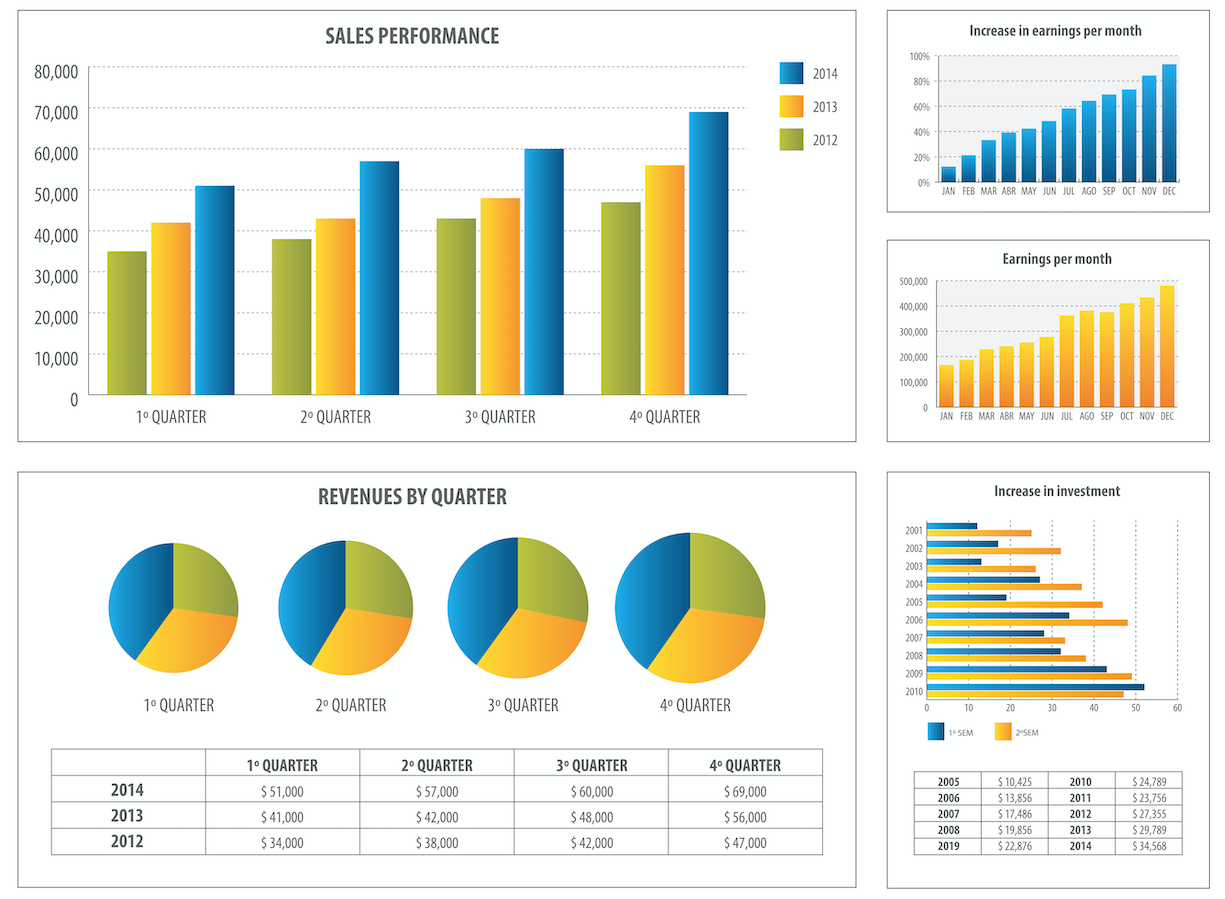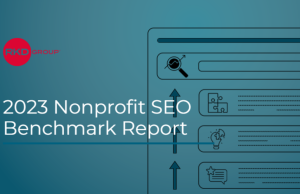Nonprofit financial managers demand a lot from accounting systems. Among other things, they rely on them to help comply with reporting requirements and use them to properly classify and report on contributions, both for external reporting and for internal analysis and action.
Software vendors have gotten better at responding to their customers’ needs as these tools grow more powerful, designing systems to help nonprofit managers with new aspects of their work. What do these changing needs look like, and how is the software addressing them?
According to some of the vendors who make them, here’s a look at the latest trends inaccounting systems for nonprofits.
Dashboards, Data Visualizations
One of the most significant shifts in the field of nonprofit accounting software is that every person in an organization can now have access to the financial information they need. This information increasingly is presented in dashboards that let each user pick and choose the relevant accounting data they want to see.
“It used to be that finance was where you had to go to ask anything,” said Joan Benson, director of nonprofit industry marketing for Sage Intacct. “Now you give people a chart or graph on their dashboard to show status by grant or program.”
As dashboards evolve, they become capable of showing a wider range of items, said Thomas Walker, financial solutions product manager for Blackbaud. “People want to log in and see everything on a homepage, such as items they need to approve,” he said.
As nonprofits move toward more outcome- based reporting – in part to meet funder and donor requirements – accounting systems are also being moved in that direction, providing not only financial accounting data but also reporting on measurable outcomes from an investor perspective.
“Nonprofits expect systems to be able to help them tell their story to donors, grantors, and constituents,” Benson said. That story includes such details as “cost per customer service, or cost per immunization delivered,” for example, and systems that can show an instant view of performance on a chart or graph.
Erin Shy, executive vice president of nonprofit solutions for Community Brands, said the design of dashboards and dashboard tools requires a careful balance, trying to find “the right blend of complexity with the right level of configuration” to provide end users with the right level of detail.
“Meaningful dashboards are something that have been around for at least a decade,” she said, “and they’re not going away.”
Dashboards also can make data available to more people outside an organization, said Ian Scotland, vice president and general manager at AccuFund.
“There are two types of dashboards,” he said. “Internal dashboards for people who use the system, and public dashboards that show status. These sorts of public dashboards can demonstrate organizational effectiveness and fiduciary efficiency.” Public access to information supports efforts for increased transparency and access to data often desired by donors and the public.

Integration and APIs
An Application Programmer’s Interface, or API, is a connection to a piece of software that lets it integrate and exchange data with another system. Some systems have APIs built in while others rely on third-party integration tools. The most common type of integration for accounting systems is with a donor database or payroll system.
Connections between systems can help prevent inconsistencies between systems and reduce duplicative data entry, Shy said, moving organizations toward a “zero data entry” model. That’s when integration tools pull data from donor management systems, payroll, and other systems into accounting software. For example, your accounting system might collect details from an expense tracking service, which in turn captures data either from credit card details or from a photo of a receipt taken from a smartphone, eliminating the need to manually enter any data.
Vendors are designing their systems to connect to enterprise integration hubs, such as Workato or Zapier, that make it easier to automate workflows between systems and other applications. For now, the cost and benefit of these sorts of solutions tend to make economic sense mostly for larger, relatively high volume organizations, but that might trickle down soon.
Machine Learning (ML) and Artificial Intelligence (AI)
Technology trend-watchers who play Buzzword Bingo can quickly fill squares that contain the phrases “Machine Learning” or “Artificial Intelligence.” No longer far-off futuristic dreams, these tools are now widely used in some very common technologies – including your smartphone’s often annoying autocorrect feature, for example – and they are coming to accounting software.
“Ignore the buzzword, look for the features,” said David Geilhufe, senior director and social impact leader for Oracle NetSuite. As an example of how machine learning might be used to improve accounting software, Geilhufe cited the idea of autocoding. Rather than requiring users to manually apply codes to revenue or expense items, a system might automatically apply codes that can be modified if necessary, saving time and effort. The software can learn to improve over time based on user feedback.
Shy said that machine learning and artificial intelligence might also help users look for patterns of interactions that require attention. She cited as an example “a pattern of activity where someone changes the name on an invoice, prints a check, then changes the name back.” Identifying patterns can prevent mistakes or abuses by watching for anomalous series of events that raise fraud concerns.
Some of these technologies already exist. Benson said that Sage Intacct’s software uses a bot named Pacioli that can flag specific transactions when it identifies something that doesn’t look right. The bot is named for Luca Pacioli, a key figure in the history of double-entry bookkeeping.
Personal Touch
As the technology evolves, so do the ways people and organizations use it. One recent trend is toward increased access to professional expertise, not just software, which seems to be taking a few different forms.
Something more nonprofits are beginning to rely on is outside accounting expertise, outsourcing tasks that used to be handled in-house, Walker said. Managers at nonprofits with a budget of at least $1 million were more likely to have someone with financial expertise on staff, whether that’s a bookkeeper or CPA, than similarly-sized commercial organizations. But, that’s changing.
This move to outsourced expertise might also mean changes to software licensing and pricing models, Scotland said.
“We see demand for this sort of outsourced software bundled with high-expertise services as likely to increase,” he said, which led his company, Accufund, to launch licensing for accountants to use the software to deliver services to their clients.
Geilhufe said he thinks more vendors will respond to this trend by pairing personalized support with software. “From the start, (Oracle NetSuite) cared about people using the software we gave away,” he said. “By assigning an account manager to every organization we work with, we start to have conversations, and then staff capture those conversations so we can identify common needs and effective practices.”
Data-Informed Decisions
It’s not hard to find the influence of data on decision-making in nearly every industry. In major league baseball, for example, more sophisticated data-gathering has changed how teams are managed, resulting in a common defensive shift in which players move away from standard positions to field locations where data shows each batter is most likely to hit the ball, in creasing the likelihood of teams getting outs.
The nonprofit sector is also moving toward using data to drive decisions. In the accounting space, Geilhufe said, organizations are moving from systems with aggregate journal entries to systems that track individual transactions, which gives them access to more detailed data that informs their decisions.
“Analytics give people insights,” said Michael Blanton, director of product marketing for Blackbaud. With detailed data in the system, people can drill down, group, and analyze data, while systems that remain rooted in their reliance on aggregated journal entries limit analysis.
One of the challenges for nonprofit leaders is that the data is so good translating it to donors, funders and even staff can be an issue. When you tie that granular data to the instant nature of social media, the ability to explain it in detail is vital, said Donald Cassady, president and chief executive officer of Grants Management Systems.
“There comes a point where you just have to trust the system” and get funders to do the same, Cassady explained. The systems are helping justify transactions with data but it is still people who have to explain it.
The data is so good and technology is evolving so quickly that the next step is not just cross platform and cross application but also making it seems across the systems, he said. There are notifications right now, but often real integration still takes a person.
Non-traditional User Interfaces
As wearable devices and smart speakers become more commonplace in homes and in society, software vendors are recognizing the market’s demand for such user interfaces. Compared to traditional desktop browsers and installed software, these systems represent very different ways to interact with data. They support mobility and allow people to work in ways that laptops, tablets, and smartphones don’t respond.
“We’re exploring what can be done with voice and gestures,” Shy said. An example is letting users ask their smartwatch or Amazon Alexa, “What is the balance on XYZ account?”

Users shouldn’t expect to throw away their keyboard or mouse anytime soon, she said. These systems are still in the exploration phase. “We need to make sure we can provide real value,” Shy said, “not just fun tech.”
Supporting Mission and Priorities
New features are driven by the need to provide tools to support nonprofits’ missions and the impact they are able to have on the world.
For Oracle NetSuite, this meant a fundamental shift from accounting and compliance to Enterprise Resource Planning (ERP) and mission achievement, Geilhufe said. “That means the bookkeeper and (chief financial officer) move from data entry to identifying that mission output is increasing or decreasing, and costs are increasing or decreasing,” he said.
Benson said that an increased demand for transparency has made it possible for financial managers at nonprofits “to give people data to raise the bar for all of us.” As one organization figures out how to perform more efficiently or effectively, others benefit, too. One way to do this, she said, is to claim an account at Guidestar.org and share your financial data there.
“This helps increase your organization’s visibility,” Benson said, “and also helps you benchmark your performance against others.”
Scotland said the vendors need to recognize that the economy is difficult for nonprofits, and to respond to the funding challenges by, providing systems that offer “better grant and program management capabilities,” he said.
“While tech tools enhance an organization’s ability to be more efficient and effective, at the end of the day we’re serving nonprofit and government organizations serving a mission,” Shy said. “We want them to spend more time on that mission.”
Vendors are acutely aware of the need for systems that inform smart decision- making. But it’s up to the organizations to make use of the systems’ features. Ultimately, the most constraining trend in nonprofit accounting might not be the technology at all, but the sector’s inability to try new things. A recent NetHope publication (The Digital Nonprofit Skills Assessment) found that fewer than half of the respondents at organizations “feel empowered to adapt or adopt new approaches,” which indicates a significant barrier to effective adoption of increasingly connected, collaborative, and realtime tools.
Technology will continue to change. It’s up to nonprofit leaders to make sure their organizations and staff change with it, seeking out and adopting new approaches and investing in training to ensure success. How people work — and how well they work — might ultimately have a bigger impact than technology on mission.
Andy Wolber is a researcher with nonprofit technology organization Idealware. Find him on Twitter at @awolber or email him at [email protected]










